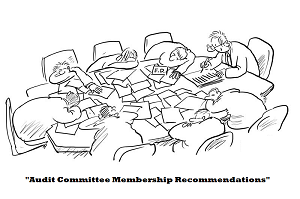To be a Certified Public accountant will not be just as very simple as one particular click. Getting a graduate using a Bachelors degree in Accountancy will not make you an accountant either nevertheless it is just a door to get a new journey. To come to be a CPA one particular ought to take a CPA licensure exam and this can be correct not just inside the Philippines but in addition in other nations.
Beneath are the needs necessary to get a individual to become in a position to take the Philippine CPA Licensure Exam.
Admission Requirements for Examinations. No person shall be admitted to the examination unless he is:
- a citizen of the Philippines;
- of good moral character;
- is a holder of the degree of Bachelor of Science in Accountancy conferred by a school, college, academy or institute duly recognized and/or accredited by the CHED or other authorized government offices; and
- has not been convicted of any criminal offense involving moral turpitude.
- Educational Qualification / Training / Experience:
- B.S. in Accountancy or its equivalent
- BSC, BBA, BSBA graduates as of Dec. 1994 with certificate of units earned.
The Scope of your examination plus the Subjects with corresponding weight in units plus the minimal hours necessary every single topic is offered below.
Scope of Examination. The examinations shall be in writing and shall cover the following subjects with the corresponding weight in units unless otherwise modified by the Board upon approval of the
Professional Regulation Commission.
As of the moment all board subjects are given 2 units with a minimum exam hours of 3 hours each subject. Since their are 7 board exam subjects all in all a total of 14 units and 21 hours. The contents and coverage of these subjects shall be in accordance with the outline or syllabus prepared and issued by the Board of Accountancy containing the following:
Theory of Accounts - Accounting terminology, accounting principles and procedures, classification of accounts, valuation of assets and liabilities, income determination, developments in the science of accountancy, etc.
Business Law and Taxation - One-half on the subject of business law covering obligation and contracts, partnerships and corporations, negotiable instruments and other phases of the legal framework of business, and the other half on taxation dealing on income tax, business taxes, transfer taxes, and other taxes affecting accounting practice.
Management Services - Principles and procedures, methods, and techniques involved in management consulting services that may be rendered by Certified Public Accountants in areas such as managerial accounting, planning and control operations, design and appraisal of accounting systems, and financial -management related services.
Auditing Theory - Auditing concepts, auditing standards, internal control, auditing procedures and techniques, and the short-form audit report.
Auditing Problems - Problems on the application of auditing standards, techniques and procedures, preparation of working papers, completion of the audit, and preparation of audit report.
Practical Accounting I - Problems concerning financial statements and accounting for assets, liabilities and stockholder’s equity.
Practical Accounting II - Problems pertaining to partnership, joint ventures, fire insurance on the insured’s books, consignments, installment sales, agencies and branches, business combinations, cost accounting, financial analysis, and government accounting.
How the examination is rated is also provided in this article.
Examination Rating. - A candidate for the examination getting a common weighted common of seventy-five percent and above shall be entitled to registration as certified public accountant and as such shall get a certificate of registration from the Board of Accountancy; Offered, That in no situation will need to the rating on any topic be much less than sixty-five percent. Inside the occasion a candidate obtains the rating of seventy-five percent and above in at the least 4 (four) subjects possessing a combined weight of eight (8) units as offered for within this Act, he shall get a conditional credit for the subjects passed; Offered, Yet, That such candidates shall take an examination inside the remaining subjects inside two years from the preceding examination; Offered additional, That if the candidate fails to get at the least a common weighted common of seventy-five percent and also a rating of at the least sixty-five percent in every single of your subjects reexamined, he shall be deemed as failed inside the complete examination.
Failing candidates to take refresher system. Any candidate who fails in two complete Certified Public Accountant board examinations shall be disqualified from taking a additional set of examination unless he submits evidence for the satisfaction of the Board of Accountancy that he has enrolled in and completed in the least twenty-four units of subjects given in Certified Public Accountant Examinations. For purposes of this Law, the examinations in which the candidate was conditioned with each other together with the removal examination on the topic in which he failed shall be counted as one particular full examination.
An accountant ought to know his/her limitations. Know the limitations on the practice of Accountancy.
Limitations on the Practice of Public Accountancy. Single practitioners and partnerships for the practice of public accountancy shall be registered certified public accountants in the Philippines: Provided, That from the effectivity of this Act, a certificate of accreditation shall be issued to certified public accountants in public practice only upon showing, in accordance with rules and regulations promulgated by the Board and approved by the Commission, that such registrant has acquired a minimum of three (3) years meaningful experience in any of the areas of public practice including taxation: Provided, further, That this requirement shall not apply to those already granted a certificate of accreditation prior to the effectivity of this Act. The Securities and Exchange Commission shall not register any corporation organized for the practice of public accountancy.


















 This can be a common to which the public will probably hold bigger nonprofit organizations, in spite of the lack of any formal legal needs that apply especially to nonprofits.
This can be a common to which the public will probably hold bigger nonprofit organizations, in spite of the lack of any formal legal needs that apply especially to nonprofits.

 When you adopt theses standards, your audit committee is accountable for preserving policies in regards to the disposition of complaints in regards to the nonprofit. It is also essential to possess procedures in spot for receiving confidential and anonymous complaints by personnel.
When you adopt theses standards, your audit committee is accountable for preserving policies in regards to the disposition of complaints in regards to the nonprofit. It is also essential to possess procedures in spot for receiving confidential and anonymous complaints by personnel.











 Audit committees are the norm amongst bigger nonprofits, but they’re becoming increasingly popular in smaller organizations at the same time. A 2005 survey by the National Urban Institute identified that 20 percent of all nonprofits surveyed had a separate audit committee. Not surprisingly, bigger organizations had been extra probably to possess audit committees than smaller ones. Fifty-eight percent of the bigger organizations (that have revenues with greater than $40 million in annual expenditures) had audit committees. In smaller organizations with annual expenditures of much less than $100,000, only 20 percent reported possessing an audit committee.
Audit committees are the norm amongst bigger nonprofits, but they’re becoming increasingly popular in smaller organizations at the same time. A 2005 survey by the National Urban Institute identified that 20 percent of all nonprofits surveyed had a separate audit committee. Not surprisingly, bigger organizations had been extra probably to possess audit committees than smaller ones. Fifty-eight percent of the bigger organizations (that have revenues with greater than $40 million in annual expenditures) had audit committees. In smaller organizations with annual expenditures of much less than $100,000, only 20 percent reported possessing an audit committee.

